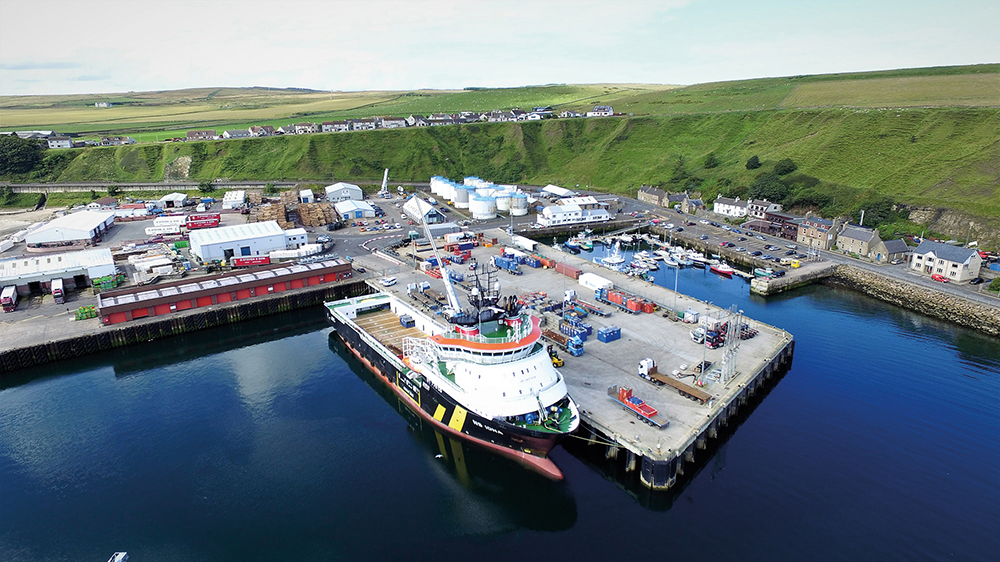Founded over 175 years ago, Scrabster Harbour has gone from strength to strength, playing a crucial role in traditional and emerging industries, bolstering the economy of Caithness, North Sutherland and beyond.
For those not in the know, Scrabster is a trust port, set up by an Act of Parliament and administered by an independent board. As custodians of the port, the board is responsible for handing the port on to subsequent generations in a better state than it was inherited.
Though Trust ports are run commercially, there are no shareholders, so all profits must be reinvested in the port and at Scrabster, development plans are underway, so the port can contribute even more to the economy.
A crucial economic hub for the Caithness and North Sutherland economy, Scrabster Harbour’s strategic position means it has a key role in a number of industries.
Scrabster continues to be a major fish and seafood landing port as well as providing lifeline ferry services to Orkney and international cargo links with the Faroe Islands. Around ten years ago, the board published a new vision and strategy for the port, focusing on diversification and broadening the business base.
The strategy seeks to combine a programme of port infrastructure improvement, with competitive charges and access to a developed local supply chain to turn Scrabster’s geographic advantage to commercial benefit.
As the nearest mainland port to the oil and gas fields west of Shetland, Scrabster Harbour has an important role to play in the energy industry. This role will increase as activity on the Atltantic frontier is forecast to increase over the coming decades.
Scrabster also has an increasing role to play in the renewables sector, due to its close proximity to offshore and onshore renewable projects. Given the Scottish Government’s targets for increasing the proportion of energy supplied by renewable sources, the harbour’s role is set to grow in this respect too.
Tourism represents another facet of Scrabster’s portfolio, with cruise ships making the Caithness harbour a regular port of call.
The first stage of the infrastructure programme was completed with the opening of £17m Jubilee Quay in June 2013. This was quickly followed by the acquisition of a new harbour workboat and the installation of a new Ice Plant in 2017.
With the strategy well underway, the signs are good, for the port is on track to achieve record revenue for the fifth consecutive year, plus the number of local jobs supported by Scrabster has increased to over 400. All the more important given the decommissioning of Dounreay and the reliance during the last few decades on the nuclear power plant for local jobs.
The gross value added to the regional economy by the port has risen to £25million per annum, an increase of over ten million pounds compared to 2008 through this increased economic activity.
The next phase of the strategy involves the redevelopment of the St Ola Pier creating a modern deep-water harbour infrastructure, allowing larger vessels to berth at Scrabster, including more cruise ships and energy sector vessels. A project which it’s estimated will create a further 40 local job opportunities.
Today, cargo and cruise ships, ferries, fishing, oil and gas and marine renewables all utilise Scrabster Harbour, supporting more local jobs and contributing an increasing amount to the regional economy.
As Sandy Mackie, Trust Manager explains, “The harbour’s contribution to the economy of Caithness and North Sutherland is growing, but we’re not resting on our laurels. More ambitious plans are in the pipelines that will benefit the harbour, the local community and the regional economy.”






